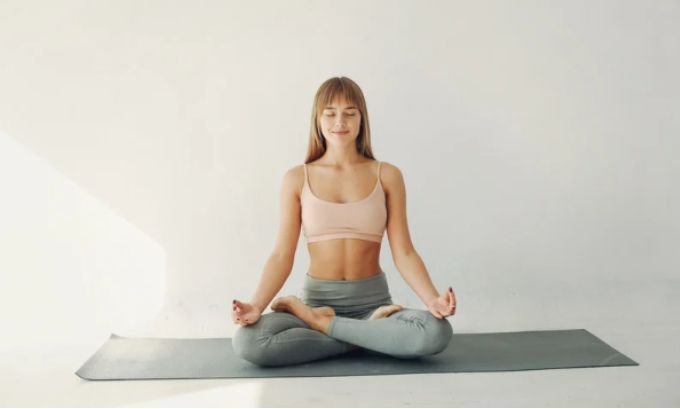Yoga is a mind-body practice that blends physical postures, breathing exercises, and meditation to improve overall well-being. It’s a holistic system for health and spiritual growth that originated thousands of years ago. If you’re curious about this ancient practice, here is everything you need to know about yoga to get started.
This comprehensive guide will walk you through the history, philosophy, different styles, and scientifically-backed benefits of developing a yoga practice. We’ll explore its core components, share personal experiences, and provide the information you need to begin your journey with confidence.
Table of Contents
What is Yoga? An Introduction to the Practice
At its core, yoga is a practice that aims to unite the mind, body, and spirit. The word “yoga” itself comes from the Sanskrit word “yuj,” which means “to yoke” or “to unite.” It combines physical postures, known as asana, with controlled breathing techniques, or pranayama, and mindfulness or meditation (dhyana). While many people in the Western world associate yoga with physical exercise and flexibility, its traditional purpose is much deeper, aiming for spiritual enlightenment and inner peace.
Today, an estimated 300 million people practice yoga globally for a wide array of reasons, from enhancing physical fitness and reducing stress to exploring a deeper connection with themselves.
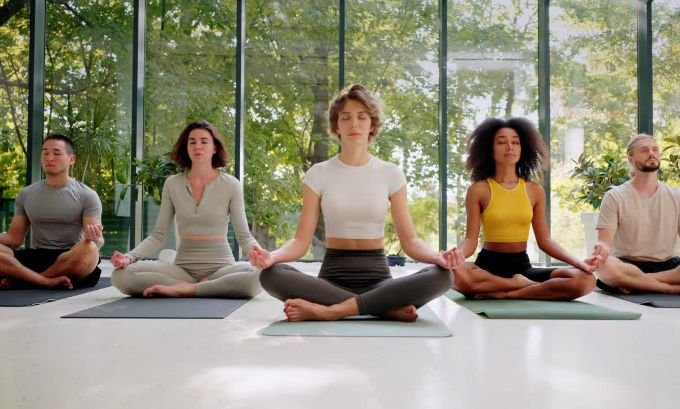
The Historical Roots: From Ancient Texts to Modern Studios
The history of yoga is rich and complex, stretching back over 5,000 years. Its earliest mentions are found in the Rigveda, one of the oldest sacred texts in Hinduism. These ancient scriptures discuss concepts and practices that laid the groundwork for what would eventually become yoga.
However, the practice was systemized much later. Around 400 CE, a sage named Patanjali compiled the Yoga Sutras, a foundational text that outlines the “eight limbs of yoga.” This framework provided a structured path for practitioners to follow, moving beyond just physical postures to include ethical principles, self-discipline, and meditation.
For centuries, yoga was primarily a spiritual discipline passed down from teacher to student in India. It wasn’t until the late 19th and early 20th centuries that it began to gain popularity in the West, largely presented as a form of exercise and a tool for well-being.
For a deeper dive into the origins, benefits, and styles of yoga and Everything You Need to Know About Yoga, check out this detailed guide in this articles gogonihon.jp.net, mumbaitimes.net or mindjournal.co
The Eight Limbs of Yoga According to Patanjali
The sage Patanjali is often called the “father of modern yoga” for his work in codifying the practice into a clear, eight-fold path in the Yoga Sutras. This system offers a guide to living a purposeful and meaningful life. These limbs are not sequential steps but rather interconnected aspects of a holistic practice.
- Yama (Ethical Standards): These are principles for how we relate to others and the world around us. They include non-violence (ahimsa), truthfulness (satya), not stealing (asteya), moderation (brahmacharya), and non-possessiveness (aparigraha).
- Niyama (Self-Discipline): These are personal observances and practices for self-care. They include cleanliness (saucha), contentment (santosha), spiritual austerities (tapas), self-study (svadhyaya), and surrender to a higher power (ishvara pranidhana).
- Asana (Physical Postures): This is the limb most people associate with yoga. Asana are the physical poses designed to purify the body and build strength and stamina for long periods of meditation.
- Pranayama (Breath Control): Pranayama involves techniques to control the breath, which is seen as the source of our life force, or prana. These exercises help calm the nervous system and focus the mind.
- Pratyahara (Sense Withdrawal): This limb involves drawing our awareness inward, away from external distractions. It’s a practice of consciously tuning out the external world to observe our internal landscape.
- Dharana (Concentration): Once the senses are withdrawn, the next step is to focus the mind on a single point, such as the breath or a mantra.
- Dhyana (Meditation): Meditation is the state of uninterrupted concentration. Where dharana is the act of focusing, dhyana is a state of being deeply aware without focus.
- Samadhi (Enlightenment): The final limb is a state of bliss or enlightenment, where the self merges with the object of meditation and the universe.
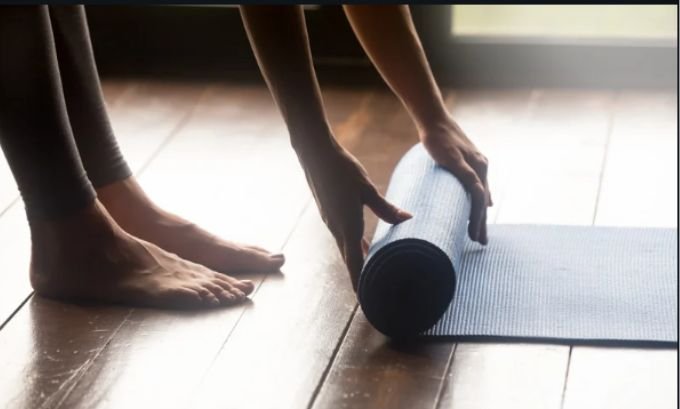
My Personal Journey with Yoga: More Than Just a Workout
When I first started yoga, my goal was simple: get more flexible. I was a runner, and my hamstrings were perpetually tight. I signed up for a beginner’s Hatha Yoga class, expecting a good stretch. What I found was something much more profound.
In my first few classes, I struggled. My Downward-Facing Dog looked more like a hunched cat, and I couldn’t touch my toes. But the instructor’s gentle reminders to “connect with your breath” and “listen to your body” started to shift my perspective. I began noticing the connection between my breath and my physical state. When I focused on deep, steady inhales and exhales (pranayama), the poses felt a little less strained.
One day, after a particularly stressful week at work, I went to my yoga class feeling tense and overwhelmed. During the final relaxation pose, Savasana, I felt a wave of calm wash over me. For the first time in a long time, my mind was quiet. It was a powerful moment of realization: this was more than just physical exercise. It was a tool for managing my mental and emotional well-being.
What I Like About My Yoga Practice
- Mental Clarity: The focus on breath and movement helps clear my mind like nothing else. It’s a form of moving meditation.
- Physical Benefits: I’m not only more flexible, but I’m also stronger. Yoga has improved my balance, posture, and core strength, which has even helped my running.
- Stress Reduction: A consistent practice has been a game-changer for managing stress. The techniques I learn on the mat, like mindful breathing, are skills I now use in my daily life.
- Self-Awareness: Yoga has taught me to be more in tune with my body’s signals. I’m better at recognizing when I need to rest and when I can push myself.
Areas for Improvement in My Practice
- Consistency: Life gets busy, and sometimes my practice falls by the wayside. My goal is to maintain a more consistent schedule, even if it’s just for 15 minutes a day.
- Exploring Deeper Philosophy: While I’ve embraced the physical and mental benefits, I want to delve deeper into the philosophical aspects, like the Yamas and Niyamas, and integrate them more fully into my life.
- Trying New Styles: I tend to stick with what I know. I want to challenge myself by trying more dynamic styles like Ashtanga or even the intense Bikram Yoga.
Understanding Chakras: The Body’s Energy Centers
In yoga philosophy, chakras are energy centers within the body that correspond to specific physical, emotional, and spiritual states. The word “chakra” means “wheel” in Sanskrit, and these centers are thought to be spinning disks of energy that should stay open and aligned for optimal health. When a chakra is blocked, it can lead to imbalances.
There are seven main chakras that run along the spine:
- Muladhara (Root Chakra): Located at the base of the spine, it relates to our sense of grounding, security, and stability.
- Svadhisthana (Sacral Chakra): Found in the lower abdomen, it governs creativity, pleasure, and emotional balance.
- Manipura (Solar Plexus Chakra): Situated in the upper abdomen, it’s the center of personal power, self-esteem, and confidence.
- Anahata (Heart Chakra): Located in the center of the chest, it is all about love, compassion, and connection.
- Vishuddha (Throat Chakra): At the throat, it governs communication, self-expression, and truth.
- Ajna (Third Eye Chakra): Found between the eyebrows, it relates to intuition, imagination, and wisdom.
- Sahasrara (Crown Chakra): At the very top of the head, it represents our connection to spirituality and pure consciousness.
Yoga practices, including specific asana, pranayama, and meditation, can help balance these energy centers.
Common Styles of Yoga: Finding the Right Fit
There are many different styles of yoga, each with its own emphasis and approach. Choosing one depends on your fitness level, goals, and personality. Here’s a look at some of the most popular types.
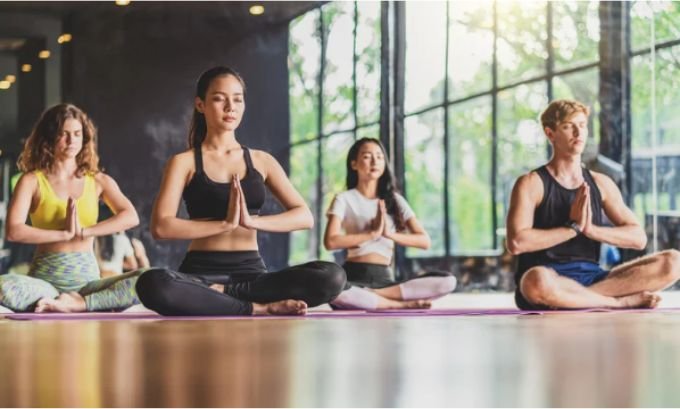
Hatha Yoga
Hatha Yoga is often a great starting point for beginners. It’s a general term for any style of yoga that teaches physical postures. Hatha classes are typically slower-paced and focus on holding basic poses (asana) while connecting with the breath. It’s an excellent way to learn foundational alignment and build a solid base for your practice.
Vinyasa Yoga
Vinyasa means “to place in a special way.” These classes are known for their fluid, movement-intensive sequences where poses are linked together with the breath. Vinyasa is often more fast-paced and can feel like a dance.
Ashtanga Yoga
Ashtanga is a rigorous style that follows a specific sequence of postures. It’s physically demanding and involves synchronizing the breath with each movement. This style is great for those who like structure and a challenging workout.
Bikram Yoga
Also known as “hot yoga,” Bikram Yoga consists of a specific series of 26 poses and two breathing exercises performed in a room heated to about 105°F (40.5°C) with 40% humidity. The heat is intended to warm the muscles, allowing for deeper stretching and detoxification through sweat. It’s an intense practice that is not suitable for everyone, especially those with cardiovascular conditions.
Iyengar Yoga
This style is all about precision and alignment. Iyengar classes use props like blocks, straps, and blankets to help students achieve the perfect form in each asana. It’s a meticulous practice that is great for learning the finer details of the poses and for students with injuries.
Restorative Yoga
Restorative yoga is a slow, gentle practice designed for deep relaxation. Poses are held for long periods with the support of props like bolsters and blankets. The goal is to relax the muscles, calm the nervous system, and restore the body and mind.
Looking to enhance your yoga practice with quality mats, props, or wellness essentials? Visit TokyoMart.store for handpicked gear to support your journey.
Comparison of Popular Yoga Styles
| Style | Pace & Intensity | Best For | Key Feature |
|---|---|---|---|
| Hatha Yoga | Slow, gentle | Beginners, stress relief | Foundational poses and alignment |
| Vinyasa Yoga | Fast, dynamic | Cardio lovers, intermediate | Fluid transitions linked to breath |
| Ashtanga Yoga | Very fast, rigorous | Those who like routine, advanced | Set sequence of demanding poses |
| Bikram Yoga | Intense, challenging | Detoxification, flexibility | 26 poses in a heated room |
| Iyengar Yoga | Slow, precise | Perfectionists, injury recovery | Use of props for alignment |
| Restorative Yoga | Very slow, passive | Deep relaxation, stress reduction | Long-held poses with full support |
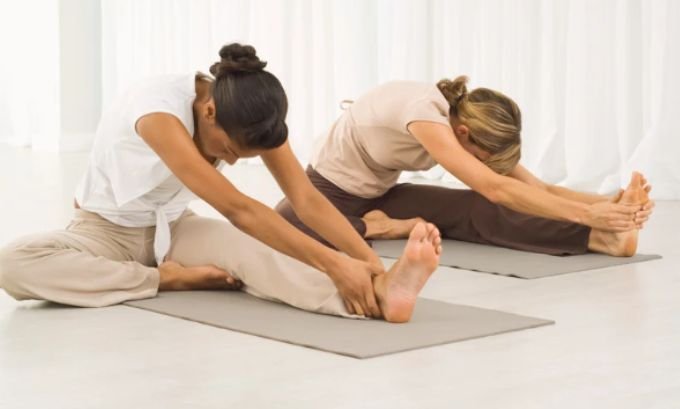
The Science-Backed Benefits of Yoga
While yoga has been practiced for thousands of years, modern science is now beginning to validate its many benefits. Credible institutions like the National Institutes of Health (NIH) have funded and published numerous studies highlighting how yoga can positively impact physical and mental health.
According to the NIH, research suggests that a regular yoga practice can:
- Reduce Stress and Anxiety: The combination of physical activity, breathing exercises, and meditation has been shown to lower cortisol levels (the stress hormone) and calm the nervous system.
- Improve Sleep Quality: Many people report better sleep after incorporating yoga into their routine. Practices like Restorative yoga are particularly effective at preparing the body for rest.
- Increase Flexibility and Balance: This is one of the most well-known benefits. Consistent practice lengthens muscles and improves joint mobility, which is crucial for healthy aging.
- Enhance Strength: Yoga uses your own body weight as resistance. Poses like Plank, Chaturanga, and Warrior poses build strength throughout the entire body.
- Relieve Chronic Pain: Studies have shown yoga can be an effective complementary therapy for conditions like chronic low back pain, arthritis, and tension headaches.
- Improve Heart Health: Regular practice can help lower blood pressure, reduce cholesterol, and improve overall cardiovascular function.
- Boost Mental Health: Yoga has been found to be a beneficial addition to treatment plans for depression, helping to elevate mood and foster a sense of well-being.
Frequently Asked Questions (FAQ)
1. What do I need to start practicing yoga?
You don’t need much! A yoga mat is helpful for grip and cushioning. Wear comfortable, stretchy clothing that allows you to move freely. Most importantly, bring an open mind.
2. How often should I practice yoga to see benefits?
Consistency is more important than duration. Practicing for 20-30 minutes, 3-4 times a week, will yield more benefits than one long class every two weeks. Even 10-15 minutes a day can make a difference.
3. Is yoga a religion?
No, yoga is not a religion. It is a philosophy and a system of practices that originated within the spiritual traditions of India, particularly Hinduism. However, people of all faiths and beliefs can practice yoga for its physical and mental health benefits without adopting any religious dogma.
4. Can I do yoga if I’m not flexible?
Absolutely! This is a common misconception. Yoga is not about being flexible; it’s about becoming more flexible. The practice meets you where you are. Saying you’re not flexible enough for yoga is like saying you’re too dirty to take a shower.
5. What is the difference between yoga and stretching?
While yoga involves stretching, it is much more comprehensive. Yoga integrates the breath (pranayama) and mindfulness (meditation) with physical postures (asana). This mind-body connection is what distinguishes it from simple stretching.
6. Is hot yoga, like Bikram Yoga, better than other types?
Not necessarily. The heat in Bikram Yoga can help muscles relax, allowing for deeper stretches, but it also increases the risk of dehydration and overstretching. The “best” type of yoga is the one that you enjoy and that feels right for your body.
7. Can yoga help with weight loss?
Yes, it can. More active styles like Vinyasa and Ashtanga can burn a significant number of calories. Furthermore, yoga helps reduce stress, which can lead to emotional eating, and it promotes mindfulness, making you more aware of your body’s hunger cues.
Conclusion: Your Journey Starts Now
We’ve covered everything you need to know about yoga, from its ancient origins in texts like the Rigveda to its modern applications supported by institutions like the NIH. We’ve explored the foundational principles laid out by Patanjali, the energetic system of the chakras, and the core practices of asana, pranayama, and meditation.
Yoga is a deeply personal journey that offers a path to greater physical health, mental clarity, and spiritual connection. Whether you choose a gentle Hatha Yoga class or an intense Bikram session, the most important step is simply to begin. Roll out your mat, take a deep breath, and discover what this transformative practice has to offer you.
Ready to start your practice? Find a local studio or explore one of the many high-quality online classes available today.
Author Bio:
This article was written by a certified yoga instructor and wellness writer with over a decade of personal practice and teaching experience. With a passion for making yoga accessible to everyone, the author combines deep knowledge of yogic philosophy with practical, evidence-based insights to help others discover the benefits of a balanced mind-body practice.

